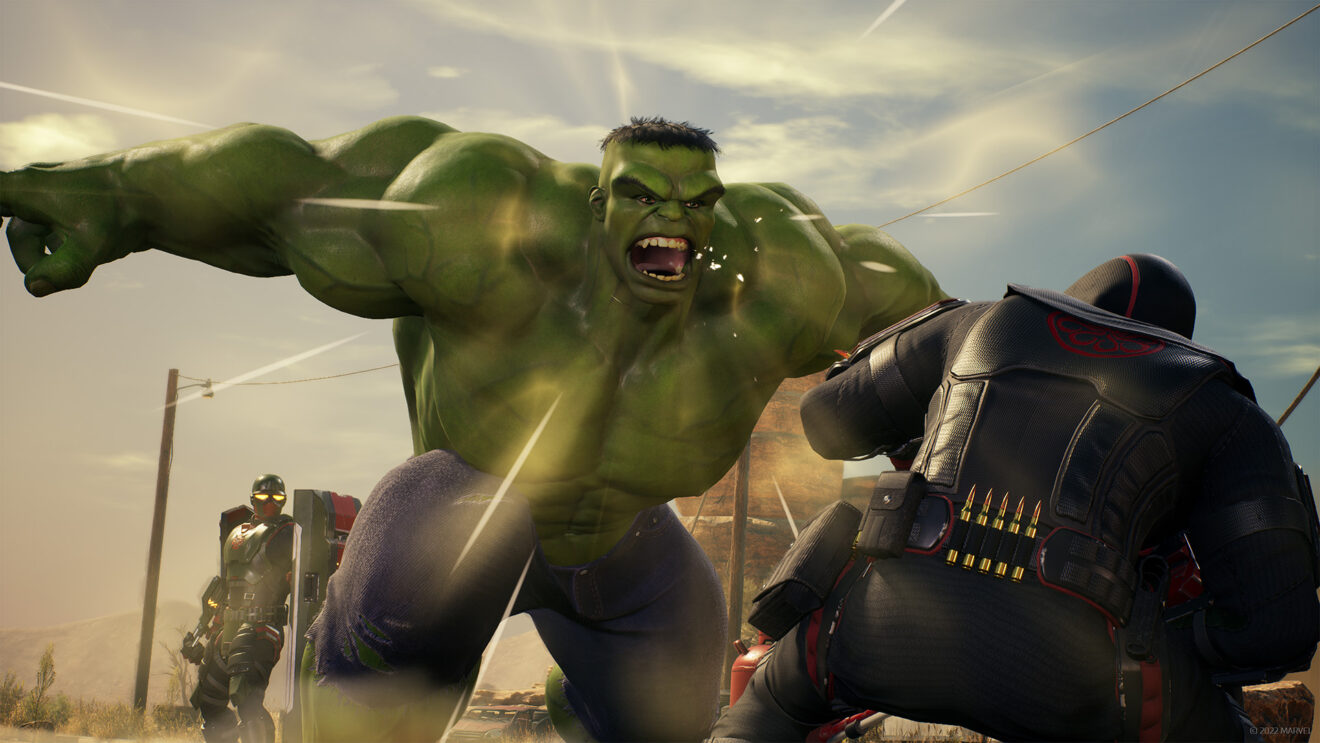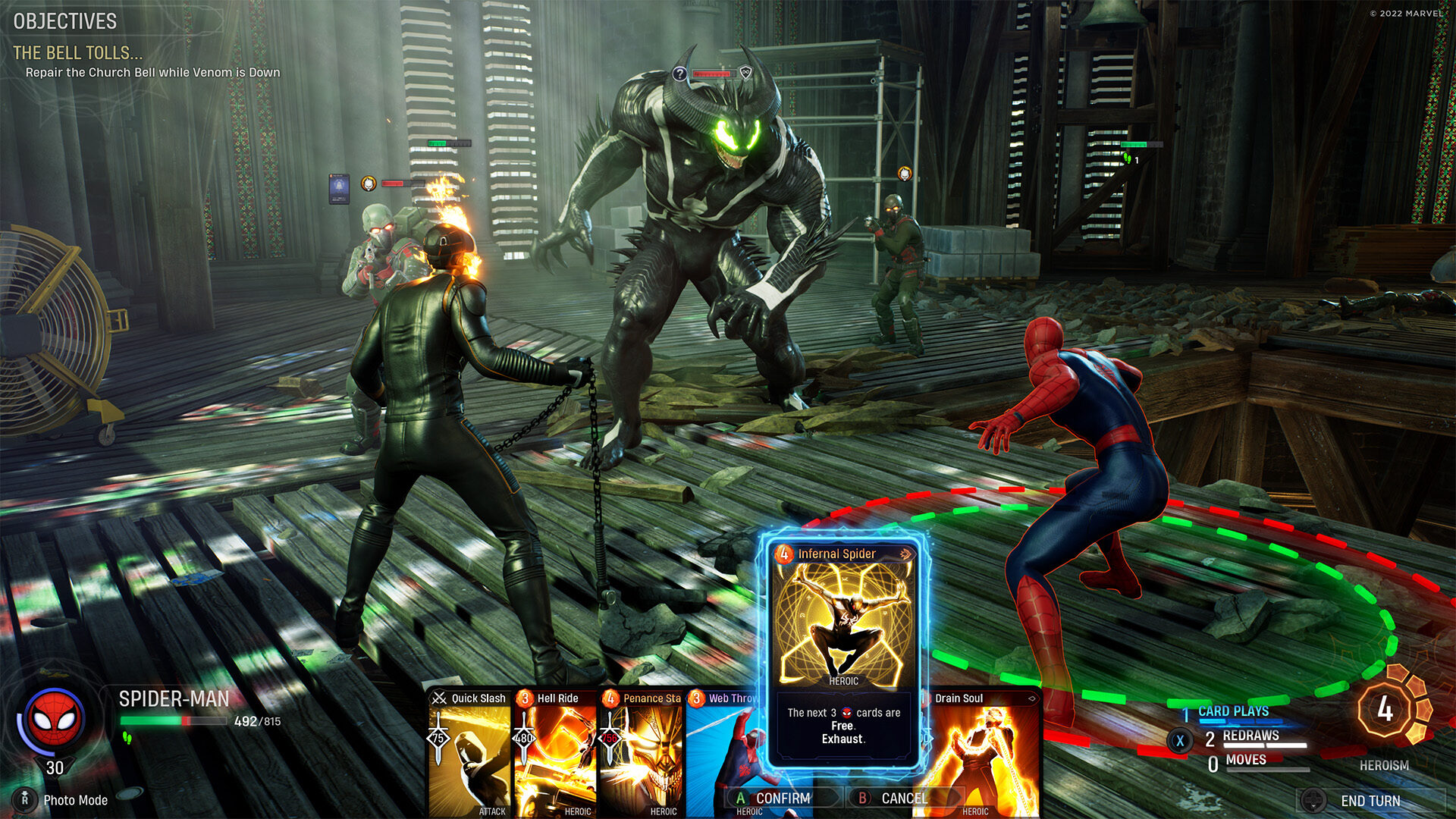
Game of the Month: Marvel’s Midnight Suns
PUBLISHER 2K Games
DEVELOPER Firaxis Games
PLATFORMS Xbox Series X/S, PS5, PC
RELEASE DATE 12.02.2022
Marvel’s Midnight Suns might not seem like the most natural choice for a game based on the world’s most popular media franchise. You won’t find any fast-paced, fly-by-the-seat-of-your-spandex-pants superhero action here. Instead, the order of the day is careful planning and decision making. Developer Firaxis has focused on translating the flashy, powered-up fights of the comics into tactical battles, broadly similar to what you might find in the Fire Emblem series or its own XCOM games.
But a few strengths help Midnight Suns stand out as far more than a simple drag-and-drop job of plugging Marvel heroes into an established genre. For starters, Firaxis has taken a big swing with the premise. While your squad will eventually grow to include some of the most recognizable Marvel heroes—like Iron Man, Spider-Man, Wolverine, and Scarlet Witch—this isn’t the same sort of comics story you’ve read or watched a million times before. Instead, it shines a spooky light on the occult side of the Marvel universe, with lesser known characters like Nico Minoru and Magik playing a prominent role. In fact, the star is an entirely original creation, a customizable hero known as the Hunter. Familiar villains like HYDRA, Venom, and Sabretooth show up, but with a demonic twist, as they’ve been corrupted to serve the game’s big bad: the demonic Lilith, servant of the Elder God Chthon and—funny enough—the Hunter’s mother.
To Midnight Suns’ great credit, Firaxis has also put a lot of thought into gameplay innovations that truly allow you to feel like a hero while putting a novel spin on the tactics genre. Rather than having an established set of moves your squad of heroes can use every turn, you instead rely on a hand of ability cards, drawn at random, to select your next move in combat. This isn’t really a card game—enemies don’t have a hand of their own, and you’re still moving around a 3D battlefield. Instead, the card-based approach allows Firaxis to introduce a bit of randomness into fights without having to rely on hit percentages.

Since you can upgrade and swap out the cards in your deck between missions, there are essentially two levels of strategy: how you set yourself up to get the best possible hand, and what you do with the hand when you have it, spending your three card plays each turn before the enemies get a chance to fight back. Even more delightful complications come from things like quick attacks, which refund a card play if you knock out an enemy, and Heroism, which you earn by playing standard cards and cash in to use your most powerful abilities.
Even once you’ve mastered the game, fights never play out the same way twice, and there are always interesting trade-offs and decisions to make. And absolutely crucial to the formula is the ability to knock back enemies with certain attacks and a broad variety of environmental obstacles that allow you to inflict added damage, so using the layout of each battlefield is crucial to success. Cards also allow Firaxis to get creative when exploring the various heroes you can lead into battle, with a wide range of strikingly animated attacks and hero-specific gimmicks, like Nico Minoru’s focus on randomized spell effects or Magick’s ability to build portals and move enemies around.
In addition to combat, there’s an entire second side of Midnight Suns, centered on exploring and upgrading your supernatural hub, the Abbey, and building friendships with the other heroes. This side of the game is less successful—it can get a bit repetitive, and the exploration gameplay suffers from the developer’s lack of experience designing third-person games.
Still, the battles are such a blast, and the tactics systems are so satisfyingly well-designed, that it’s worth overlooking a few blemishes to enjoy the best of what Marvel’s Midnight Suns has to offer.